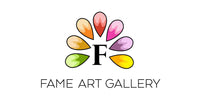Sandro Botticelli
Birth of Venus
Allegory Of Spring La Primavera
Sandro Botticelli – a tremendous Italian painter
The popular Renaissance painter Sandro Botticelli was born as Alessandro di Mariano Filipepi. He was born in the year 1445 in the city of Florence, Italy. His adopted name came from his brother, who was known as Botticelli, which means 'Little Barrel.' His father, who worked as a tanner, sent the young Botticelli to a goldsmith when he finished school to learn some skills. But he was more interested in becoming a painter after learning about his fondness for painting. His father got him apprenticed to one of the most brilliant masters in Florence, Filippo Lippi. Botticelli was taught how to paint on fresco and wooden panels from Lippi. In addition, his master taught him how flowing clothe is painted and the perspective of painting. The young apprentice became so good that he began to use the pale colors used by his trainer. In the later part of the fifteenth century, the painter set up his workshop. The pope commissioned him to create stunning frescos on the walls of the Vatican.
He made his way of success.
After he became famous for his artworks, families of Florence ordered their paintings from Botticelli, because of which he never struggled in his entire life. In his time, because of the rich families in Florence. he received a lot of exposure. This intellectual exposure must have had a great influence on the artist. Some of Botticelli's work was too controversial that he has feared for his life. As a result, he destroyed some of his work. The religious fever that had hit Europe at the time also caused other renaissance paintings to be lost. It is so unfortunate that such masterpieces suffered the problems of religious intolerance. However, it is important to know that all the secular artists faced the destruction of secular paintings at one time or the other. Only eight survived. His influence on the part of art history and popular culture made people remember him. He died on May 17th, 1510.
Popular artworks
- The Birth of Venus, in mid-1840
- Primavera, in 1499
- adoration of the magi, in 1475
- Madonna of the Magnificat, in 1841




